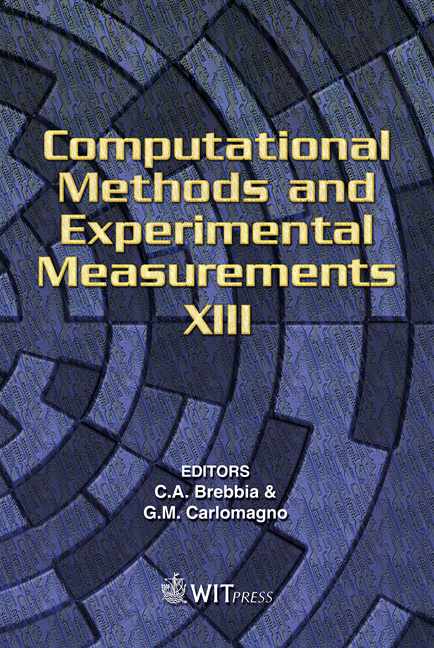Spectral Analysis Of A Transitional Separated-reattached Flow Using Fourier And Wavelet Transforms
Price
Free (open access)
Transaction
Volume
46
Pages
11
Published
2007
Size
1,393 kb
Paper DOI
10.2495/CMEM070021
Copyright
WIT Press
Author(s)
I. E. Abdalla & M. J. Cook
Abstract
Large-eddy simulations (LES) of transitional separating-reattaching flow over a square surface mounted obstacle (SSMO) and a forward-facing step (FFS) have been performed. The Reynolds number based on the uniform inlet velocity and the obstacle height is 4.5 × 103. A dynamic subgrid-scale model is employed in this work. The mean LES results compare favourably with the available experimental and DNS data. This paper addresses the characteristic shedding modes associated with the separated-reattached flows on the SSMO and the FFS and sheds light on the use of the wavelet transform(WT) in extracting the content of a time history of a (velocity and/or pressure) signal compared to the traditional Fourier transform (FT). The turbulence spectra for the geometries revealed amplified frequency modes both upstream and downstream of the separation edge with those associated with the SSMO showingmore clearly compared to the FFS. A frequency peak was detected at a location upstream of the separation line and immediately above the SSMO. The value of this frequency suggests that the upstream separated region is unstable via the Kelvin–Helmholtz instability and the peak can not be attributed to the flapping of the separated shear layer which is a phenomenon commonly associated with this class of flows. The WT captured events that are characterised by narrow periods (scales) and which happened over shorter times. Such events are smoothed out by the Fourier transform indicating the superiority of the WT over the FT. Keywords: large-eddy simulation, wavelet and Fourier transform, spectral analysis, transitional to turbulence.
Keywords
large-eddy simulation, wavelet and Fourier transform, spectral analysis, transitional to turbulence.





